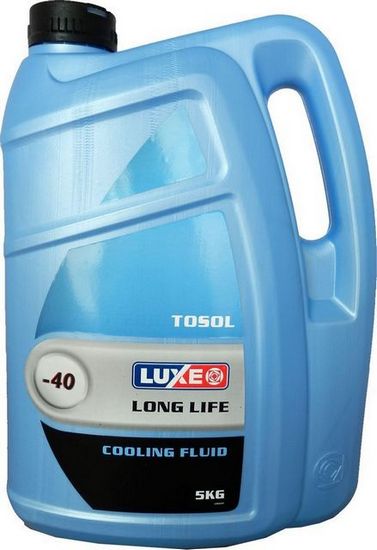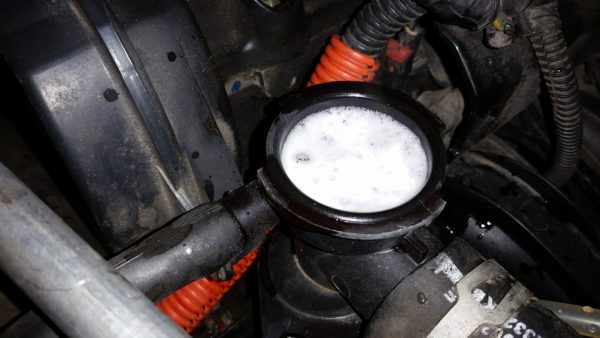
Is it possible to mix antifreeze of different colors and manufacturers with each other or with antifreeze?
Today there are several varieties of antifreeze, differing in color, class, and composition. Each car from the factory is designed for the operation of a particular fluid. A mismatch in the refrigerant can lead to malfunctions in the cooling system and the engine as a whole. Therefore, if necessary, add one type of coolant to another, you need to know which antifreezes can be mixed with each other and which cannot.
What are the types and colors of antifreeze
Automotive internal combustion engines are cooled with special fluids - antifreezes. Today there are several types of such refrigerants, which differ in color, composition, characteristics. Therefore, before pouring one or another coolant (coolant) into the system, you need to familiarize yourself with its parameters. The difference in parameters and the possibility of mixing one antifreeze with another should be considered in more detail.
Antifreeze classification
In the days of the USSR, ordinary water or antifreeze, which is a brand of antifreeze, was traditionally used as a coolant. In the manufacture of this refrigerant, inorganic inhibitors are used, which deteriorate after less than 2 years of operation and when the temperature rises to +108 ° C. Silicates present in the composition are deposited on the inner surface of the elements of the cooling system, which reduces the efficiency of the motor cooling.

There are several types of antifreeze:
- hybrid (G11). This coolant can have a green, blue, yellow or turquoise color. Phosphates or silicates are used as inhibitors in its composition. Antifreeze has a service life of 3 years and is designed to operate with any type of radiator. In addition to its cooling function, the hybrid antifreeze is also corrosion-resistant. The subclasses of the fluid under consideration are G11 + and G11 ++, which have a higher content of carboxylic acids;
- carboxylate (G12). This type of coolant refers to red organic fluids of different shades. It serves for 5 years and provides much better corrosion protection compared to the G11 group. G12 refrigerants only cover the areas of corrosion inside the cooling system, that is, where it is needed. Thus, the cooling efficiency of the motor does not deteriorate;
- lobridal (G13). Orange, yellow or purple antifreeze consists of an organic base and mineral inhibitors. The substance forms a thin protective film on metal in places of corrosion. The refrigerant contains silicates and organic acids. The service life of antifreeze is unlimited, provided that it is poured into a new car.

Can antifreeze be mixed
If it becomes necessary to mix different types of coolant, you first need to make sure that the resulting mixture will not harm the power unit and the cooling system.
Same color but different manufacturers
Sometimes a situation arises when it is not possible to add antifreeze from the company that is poured into the system into the system. In this case, there is a way out, since refrigerants from different manufacturers of the same color can be mixed with each other. The main thing is that the standards are similar, that is, antifreeze G11 (green) of one company can be mixed without problems with G11 (green) of another company. G12 and G13 can be mixed in the same way.
Video: is it possible to mix antifreeze of different colors and manufacturers
Table: compatibility of antifreezes of different classes when topping up
| coolant in the system | |||||||
| Tosol | G11 | G12 | G12 + | G12 ++ | G13 | ||
| Coolant to top up the system | Tosol | Yes | Yes | No | No | No | No |
| G11 | Yes | Yes | No | No | No | No | |
| G12 | No | No | Yes | No | No | No | |
| G12 + | Yes | Yes | Yes | Yes | No | No | |
| G12 ++ | Yes | Yes | Yes | Yes | Yes | Yes | |
| G13 | Yes | Yes | Yes | Yes | Yes | Yes | |
With antifreeze
Often, motorists wonder about mixing antifreeze with antifreeze. You need to understand that these substances have different compositions, so it is forbidden to mix them. The difference lies both in the additives used, and in the boiling and freezing temperatures, as well as in the degree of aggressiveness to the elements of the cooling system. When mixing antifreeze with antifreeze, a chemical reaction is possible, followed by precipitation, which simply clogs the channels of the cooling system. This can lead to the following negative consequences:
- to overheating of the power unit;
- improper operation of the thermostat;
- breakdown of the pump.
This is the minimum of problems that can arise when a seemingly harmless combination of two refrigerants designed to perform the same function. Additionally, foaming may occur, which is an undesirable process, since the coolant may freeze or the motor may overheat.


In addition to the listed nuances, severe corrosion can begin, damaging the elements of the system. If you mix antifreeze with antifreeze on a modern car, the electronics simply will not allow the engine to start due to a mismatch in the fluid in the expansion tank.
Video: mixing different types of antifreezes with antifreeze


Watch this video on YouTube
Mix G11 and G12, G13
You can mix different groups of antifreezes, but you need to know which refrigerant is compatible with which. If you mix G11 and G12, then, most likely, nothing terrible will happen and the precipitate will not fall out. The resulting liquid will create a film and remove rust. However, when combining different fluids, you need to understand that other additives that are not designed for use in the cooling system of your car, for example, radiators, can lead to poor cooling.


This is explained by the fact that the green refrigerant covers the internal cavity of the system with a film, preventing the normal cooling of the motor and other units. But such a statement is appropriate when adding a significant amount of liquid. If, however, about 0,5 liters of such refrigerant is added to the system, then no changes will occur. It is not recommended to mix G13 antifreeze with other types of coolant due to the different base in the composition.
It is allowed to mix different classes of antifreeze in emergency cases for short-term operation, i.e. when it is not possible to fill in the required liquid. As soon as possible, the system should be flushed and filled with refrigerant recommended by the manufacturer.
During the operation of a car, situations often arise when it is required to mix different types of antifreeze. Due to the different composition of refrigerants, not all fluids are interchangeable and can be used for a particular machine. If the mixing of antifreezes is carried out taking into account their class, then such a procedure will not cause any harm to the car.

